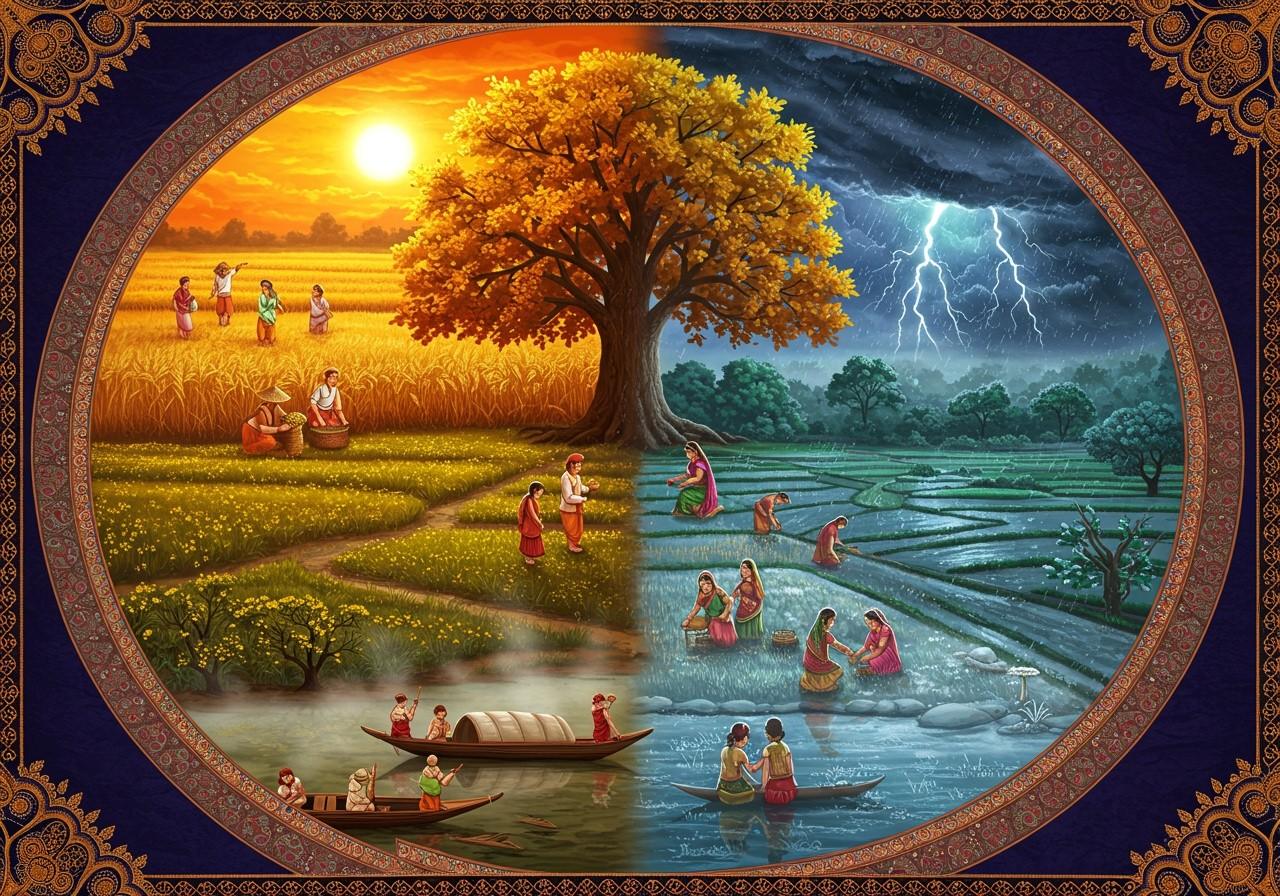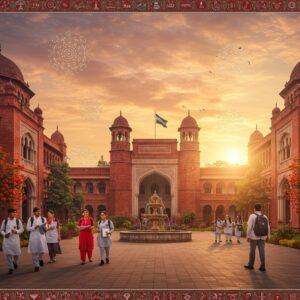
Bihar, a state nestled in eastern India, boasts a rich cultural heritage and historical significance. Its diverse geography, encompassing the fertile Gangetic plains and parts of the Himalayas, shapes its unique climate and weather. Understanding these patterns is crucial for residents and visitors, as they influence daily life, agricultural practices, and the timing of festivals.
Geographical Influences on Bihar’s Climate
Bihar’s topography plays a key role in its weather. The state is divided into three distinct regions:
- Northern Plains: As part of the Gangetic basin, this region experiences hot summers and cold winters.
- Central Plateau: This area enjoys a more moderate climate.
- Southern Plateau: Closer to the Chota Nagpur Plateau, this region experiences more extreme temperature variations.
The Ganges River significantly influences humidity and rainfall patterns across the state.
Bihar’s Scorching Summers
Summer in Bihar typically stretches from March to June. Temperatures can soar above 40°C (104°F), especially in May and June. The heat is often intense and dry, particularly in the Northern Plains. Traditional methods for staying cool include using earthen pots for water storage and wearing light cotton clothing. High temperatures can lead to heatwaves, posing health risks, especially for vulnerable populations like the elderly and children. Agricultural activities are carefully planned around the summer heat to minimize crop damage.
Beat the heat with Poojn.in! Our cooling copper and brass water vessels keep water refreshingly cool naturally. Stay hydrated and comfortable during Bihar’s hot summers with traditional and effective solutions from Poojn.in.
The Vital Monsoon Season in Bihar
Monsoon season in Bihar arrives between June and September, offering relief from the summer’s heat. The state receives an average annual rainfall of around 1,200 mm, primarily during this period. The monsoon replenishes water sources and supports agriculture. However, excessive rainfall can cause flooding, particularly in low-lying areas along the Ganges. Flood management and preparedness are essential. Traditional festivals like Teej and Chhath Puja are connected to the monsoon, celebrating nature’s abundance.
Protect your puja items during the monsoon season with Poojn.in’s durable puja thalis and storage containers. Keep your sacred items safe from humidity and moisture damage. Shop now and prepare for the monsoon with Poojn.in.
Chilly Winters in Bihar
Winter in Bihar lasts from November to February, with temperatures ranging from 5°C (41°F) to 15°C (59°F). The Northern Plains experience colder temperatures than the Southern Plateau. Foggy mornings and evenings can affect visibility. Traditional winter foods like “makki ki roti” and “sarson ka saag” are popular during this time. The cold weather presents challenges, particularly for the underprivileged, making warm clothing and shelter crucial. Winter festivals like Makar Sankranti and Lohri are celebrated with enthusiasm.
Brighten your winter evenings with Poojn.in’s collection of brass and copper diyas and agarbatti stands. Add warmth and light to your prayers during the colder months. Explore our range of winter puja essentials at Poojn.in.
Transitional Seasons: Spring and Autumn
Spring (February to March) and autumn (October to November) are short but significant periods in Bihar. Spring offers pleasant weather and blooming flowers, making it a perfect time for outdoor activities and festivals like Holi. Autumn marks the end of the monsoon and the start of the harvest season, celebrated with festivals such as Dussehra and Diwali. These seasons provide a respite from the extreme temperatures of summer and winter.
Impact on Agriculture and Economy
Bihar’s economy relies heavily on agriculture, and its climate directly impacts farming practices and crop yields. The monsoon season is critical for crops like rice, maize, and pulses. Unpredictable weather, such as delayed monsoons or excessive rainfall, can negatively affect harvests. The state government and local farmers employ strategies like crop diversification and water management to mitigate these risks. Understanding Bihar’s climate allows for better planning of agricultural activities and contributes to food security.
Conclusion
Understanding Bihar’s climate is key to appreciating the state’s rich culture and ensuring the well-being of its people. Each season—from the scorching summers and vital monsoons to the chilly winters and transitional spring and autumn—plays a unique role in daily life, agriculture, and festivals. By recognizing these seasonal variations, we can better prepare for weather-related challenges and celebrate the distinct traditions that mark Bihar’s diverse climate. Whether you’re planning a visit or participating in local customs, this knowledge enhances your connection to Bihar’s vibrant cultural tapestry.
FAQs: Bihar’s Climate and Weather
What characterizes Bihar’s climate? Bihar experiences a tropical climate with hot summers, cool winters, and a pronounced monsoon season.
How hot are Bihar’s summers? Temperatures can exceed 40°C (104°F) during the summer months, making it intensely hot. According to recent weather data, temperatures can reach up to 40°C during the day and drop to 25°C at night.
When does the monsoon season begin in Bihar? The monsoon season typically commences in June and continues until September.
How much rain does Bihar receive during the monsoon? Bihar experiences substantial rainfall during the monsoon, averaging between 1,200 mm and 1,500 mm.
What are the winter temperatures like in Bihar? Winter temperatures in Bihar can drop as low as 4°C (39°F), particularly in December and January.
Is there a flood risk in Bihar during monsoon season? Yes, due to the heavy rainfall and potential for overflowing rivers, Bihar is susceptible to flooding during the monsoon.
How does Bihar’s weather influence agriculture? The state’s climate and weather are crucial for agriculture, with the monsoon rains being essential for crop growth.
What type of clothing is suitable for Bihar’s weather? Light cotton clothing is recommended for summer, while warm woolen clothes are necessary for the cold winter months.
For the most up-to-date weather information and a detailed 10-day forecast for Bihar, please refer to The Weather Channel and Weather.com.
Poojn.in offers a wide selection of puja items for all occasions and seasons. Plan your pilgrimage with ease using our resources and explore spiritual journeys to important sites. Learn about Baidyanath Dham and other significant destinations. Poojn.in is your one-stop shop for all your cultural and spiritual needs.


